A journey through the Tarot cards is primarily a journey into our own depths. Whatever we encounter along the way is an aspect of our own deepest, and highest, self. – Sallie Nichols
The Fool, The High Priestess, The Hanged Man …
Do the symbols, figures, and archetypes within the tarot call to you?
If they do, realize that they are sacred mirrors of your own inner landscape, your own primordial depths.

Spiritual Wanderer Course:
Being a lone wolf and a spiritual wanderer is a sacred calling in life – a unique and alchemical path of awakening. You don’t need to feel lost, alone, or stuck on your journey any more. It’s time to meet your soul’s deep needs for clarity, self-acceptance, and empowerment. Let us show you how …
The cards reveal the whispers from your unconscious mind and Soul, inviting you to walk the path of self-knowledge and illumination.
Of all the inner work tools I’ve used through the years, tarot is one of my absolute favorites. I have been studying it for almost a decade now, have done readings for individuals and groups (via Shadow & Light), and I pull a card on most days to find a sense of clarity and direction.
One of the tarot’s most powerful applications is shadow work – that is, learning how to meet, explore, and understand your wounded parts and your repressed “dark side.”
In this beginner’s guide, I’ll show you how to do tarot shadow work, including what to be careful of, how to interpret the cards, stay grounded, and more.
Table of contents
- Tarot is a Wise Psychospiritual Tool on the Awakening Journey
- How to Start Reading Tarot (Beginner’s Advice)
- How to Do Tarot Shadow Work: A Beginner’s Step-by-Step Guide
- Step 0 – Learn the cards for a basic understanding
- Step 1 – Dedicate a journal or journaling app on your phone to doing tarot shadow work
- Step 2 – Start simple by doing one card spreads only
- Step 3 – When you’re ready, move on to multi-card spreads
- Step 4 – Notice any discomfort or strong emotional reactions that arise
- Step 5 – What to do if you get stuck or have no idea what the card means
- Get Tarot Shadow Work Help Every Week
- Be Gentle and Go Slowly
Tarot is a Wise Psychospiritual Tool on the Awakening Journey
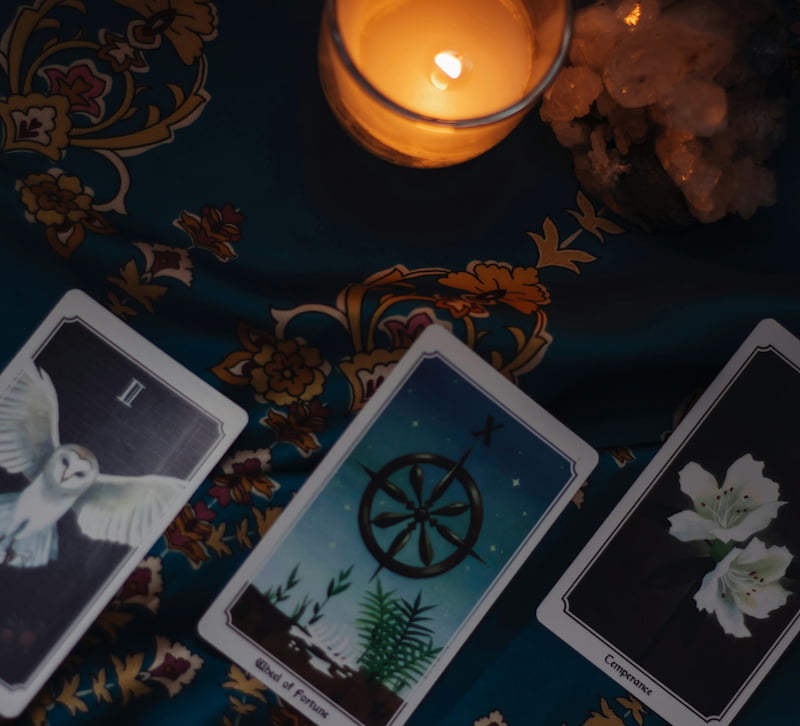
Before anything, I want to clarify that I see tarot as a powerful psychospiritual tool on the awakening path.
I don’t use tarot as a “fortune telling” device, nor do I believe its true value dwells in trying to predict the future. The future is ever-changing and never set in stone, so using tarot to try to determine what’s going to happen is wasted effort in my mind.
Instead, I see the tarot as an illuminating friend, wise guide, and clear mirror of our deepest fears, desires, and truths. I approach tarot in a present-moment context within this article.

Shadow & Light Membership:
⭐️⭐️⭐️⭐️⭐ "Receiving these messages is a beacon of light and hope for me in currently very challenging times. The words of wisdom speak right to my soul, guiding and encouraging me further on my path. I highly recommend Shadow & Light to everyone who seeks to develop and cultivate a relationship with the Inner Self." – Karin
With its rich symbolism and archetypes, tarot is a brilliant way of learning how to explore your core wounds, limiting beliefs, and Soul loss, offering you help on your path back to ensoulment – or learning to live from your Soul again.
How to Start Reading Tarot (Beginner’s Advice)
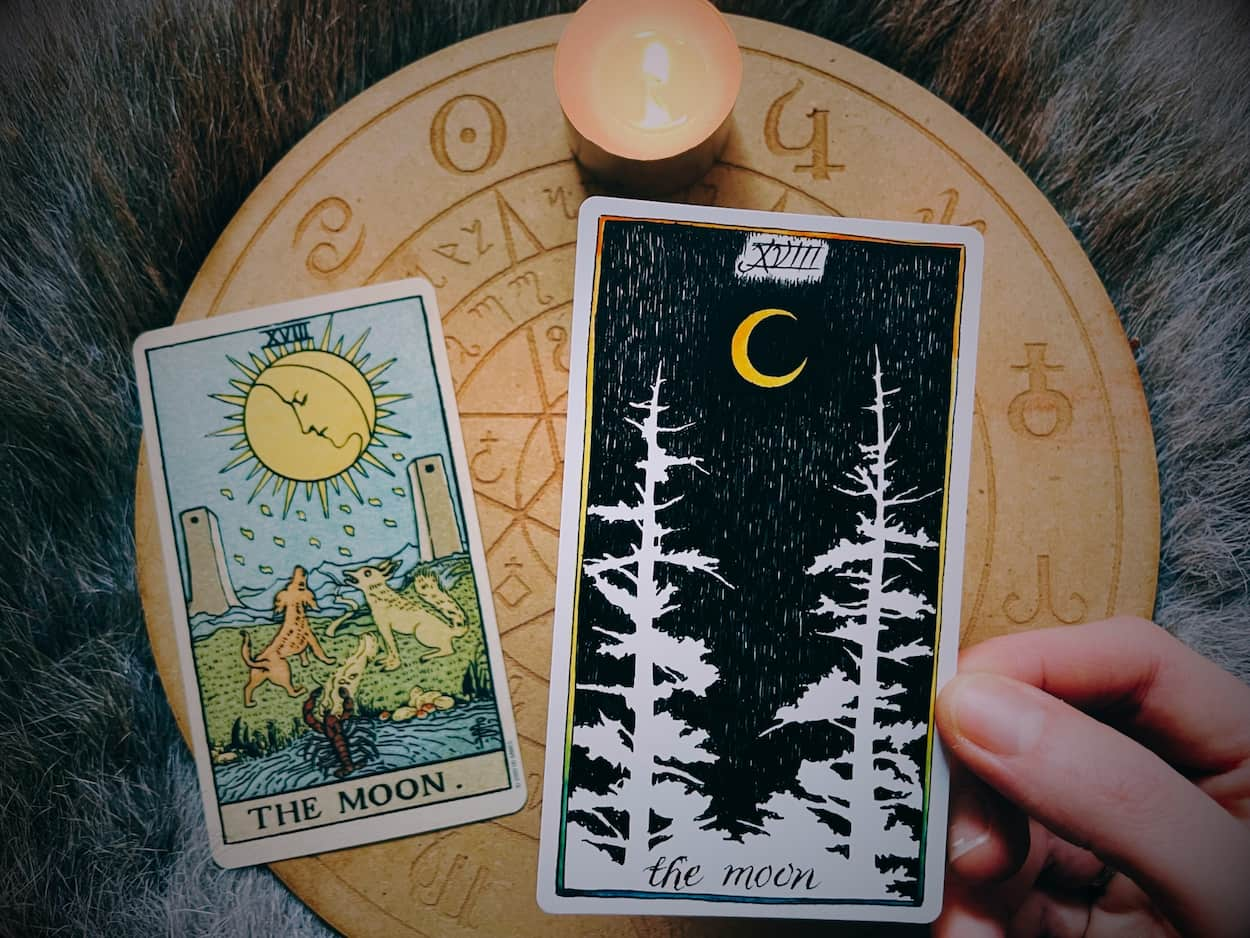
A tarot reading reveals what is hidden. It does this through the interpretation of symbols that make the unconscious conscious, the profane sacred, and the chance purposeful and meaningful. Ultimately, it is a search for the spiritual source that brings nourishment and renewal. – Mary K. Greer
If you’re new to the tarot and are curious about how to read its oftentimes baffling imagery, you’re not alone. I still get mental blanks from time to time.
But, through time and experience, I’ve learned a few key principles:
- Get grounded. Give yourself some time and space – make a ritual out of this! Ground yourself by turning off your phone, feeling your connection to the earth, taking a slow and deep breath, and connecting with your higher power (Self, Soul, Spirit). Avoid pulling cards when you’re stressed, as you typically won’t have the inner space to connect to the meaning, and they may just confuse or upset you more. Some people like to ‘clear’ their deck of cards beforehand with herbal smoke, stones, and other objects. I prefer to keep it simple and ‘blow’ away any stagnant energy, holding it to my chest to attune it to my deeper Self.
- Focus on how the card makes you feel. Tune into that. (E.g., does it feel airy, heavy, sombre, joyful, spacious, tense, playful, etc.)
- Engage your senses. If the card had a smell, sound, flavor, or texture, what would that be?
- Don’t overthink. Notice what words first emerge when you look at a card – these ‘first sparks’ of insight are from your intuition. For example, you may look at The Moon card and have words like “unconscious, inner journey, primal fear” pop into your mind. You can then relate these words to your own inward experience right now.
- Use the tarot in a present-moment-focused way. As I’ve already said above, I’m not a fan of using the tarot for prediction or future-telling – that’s not my approach. It’s also a poor way of doing tarot shadow work. I recommend doing tarot readings for yourself, right here and now, with the problems you currently face. Also, please focus on yourself. Don’t try to spy on others and decipher their thoughts or intentions with your readings! If you want to know, ask. That’s the only way you’ll know for sure what the other thinks or feels.
- It’s okay to consult the guidebook or others’ interpretations. While your intuition is what ultimately counts the most, your intellect also needs to be engaged. As a beginner, it’s particularly helpful to build up a “left-brained” understanding of the cards. This will help you feel confident by building a strong intellectual foundation that you can lean on and build from. Some tarot enthusiasts argue that intuition is all that counts, but I believe in walking the “middle path” of balance, where the yin (intuition) and yang (intellect) are engaged when learning the tarot. Plus, getting different opinions will give you a much more multi-dimensional understanding of each card (and it’s way more interesting!).
- Start with the Rider-Waite-Smith (RWS) tarot. There are other systems like the Thoth and Marseille, but for a beginner, the RWS is the most “friendly,” in my opinion. Some great RWS tarot decks are the Smith-Waite Centennial, Golden Art Nouveau, and the Old Style Tarot.
- Start with one deck, not to overwhelm yourself. I’ve made the horrible mistake of going down the “buy every tarot deck you can find” consumerist rabbit hole before, collecting over 100 tarot and oracle decks at one point. The only problem was that I was too busy hunting for my next find to actually dedicate time to learning the tarot better. So my recommendation is to follow teachers and guides who focus on actually teaching you the tarot, instead of those who film “deck haul” or endless “unboxing” videos. If you’re serious about learning the tarot, these types of videos are not only distracting but also triggering, especially if you easily fall into negative buying spirals.
- Build a relationship with your deck and the archetypal figures within it. Meditate with your deck, sleep with it next to your bed, go on inner journeys, and talk to the figures, journal about the cards – these are all wonderful ways of building a relationship with your deck. One of my recent favorite activities has been to apply tarot imagery to everyday life situations, e.g., “This feeling of being overburdened reminds me of the Ten of Wands,” “I’m having a Chariot card day,” or “That person has a King of Swords energy.”
I recommend starting with two books. The first is a classic, Seventy-Eight Degrees of Wisdom by Rachel Pollack. The second is actually my favorite that’s way more obscure, it’s called Spiritual Tarot: Seventy-Eight Paths to Personal Development by Signe E. Echols. (Don’t overwhelm yourself at first, just choose one or two books and go from there!)
How to Do Tarot Shadow Work: A Beginner’s Step-by-Step Guide

Tarot cards either clarify, interconnect, or amplify what already exists in consciousness, or else they bring unconscious possibilities into conscious awareness. – Arthur Rosengarten, Ph.D.
Let’s be frank here: tarot shadow work isn’t just something you randomly “do” one day.
Sure, you can approach it that way. But in my experience, tarot shadow work is most powerful, effective, and transformative when it is treated as an ongoing process and a spiritual path itself.
In other words, this is a weekly, if not daily, practice.
Being mindful of our blind spots is helpful in every life circumstance and situation because it helps us to live and act more consciously.
By living and acting more consciously, we can make better decisions, find more clarity, move through inner blockages, liberate trapped energy, be more creative, and connect with our Soul’s wisdom.
Special note: If at any time you feel overwhelmed by doing tarot shadow work, stop immediately. Take a break. Practice self-care and self-love. This practice isn’t a substitute for therapy, but it can be a supplement if done mindfully, slowly, and gently.
Would you like to save this?
Your information will never be shared.
Here’s a beginner-friendly guide to getting started with tarot shadow work:
Step 0 – Learn the cards for a basic understanding
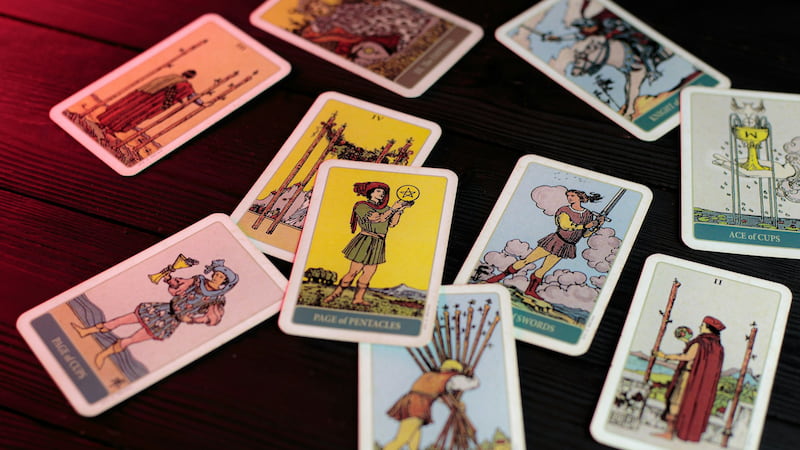
Before doing tarot shadow work, it obviously helps to have a basic understanding of the tarot system.
Back when I was learning the tarot, I did this by pulling one card a day and journaling about my first impressions. I also consulted meaty books like The Ultimate Guide to Tarot Card Meanings by Brigit Esselmont and other tarot websites out there for traditional meanings.
It’s okay if you still have many gaps in your knowledge regarding tarot – you can still do tarot shadow work. This just means you’ll need to do more meditating, research, and reflection to understand what the cards you pull are sharing with you.
Step 1 – Dedicate a journal or journaling app on your phone to doing tarot shadow work

Create a special and private place where you can write down your thoughts and reflections.
If you’re short on time like me (hello seven-month-old baby!), then this journaling could literally be composed of a small paragraph done within the space of five minutes or less.
If you have more time, write at length without stopping to edit or judge what you’re writing. Just let it flow. The more “stream of consciousness” you can write, the better.
Step 2 – Start simple by doing one card spreads only

Don’t overwhelm yourself with large, complicated spreads. Choose a single question and pull a single card. This approach will help you gain much more clarity by helping you to focus on depth rather than breadth.
In my Mindful Shadow Work book, I share seventeen powerful one-card shadow work questions. Three of these you can use right now are:
- What does my shadow want me to know right now?
- What pattern or belief do I need to acknowledge so I can find more peace and joy in my life?
- What am I resisting in my life right now?
Choose one of these questions right now and pull a card. Then spend some time reflecting on what comes up for you internally.
Step 3 – When you’re ready, move on to multi-card spreads
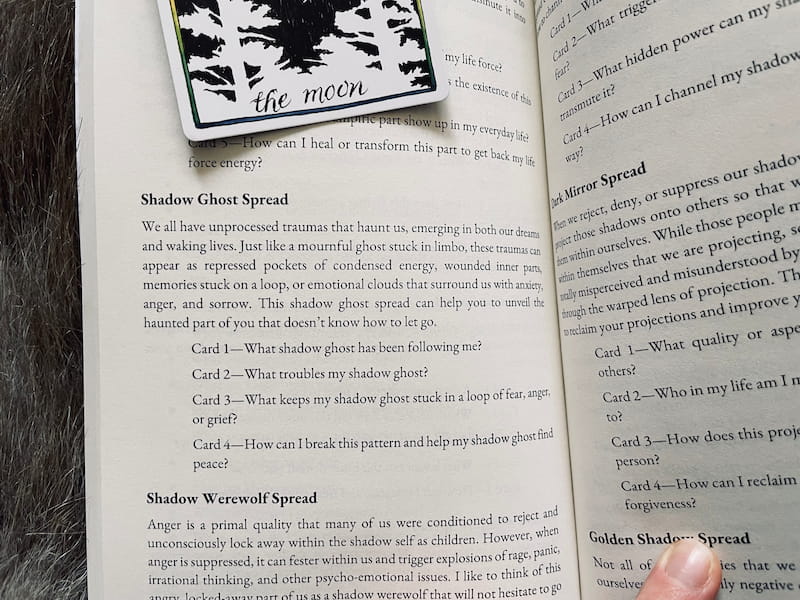
Here’s one of the tarot shadow work spreads I recommend from my book Mindful Shadow Work (there are way more in the book). It’s called the Shadow Ghost spread, and as I write, “This shadow ghost spread can help you to unveil the haunted part of you that doesn’t know how to let go.” It’s great for exploring unprocessed traumas:
- Card 1 – What shadow ghost has been following me?
- Card 2 – What troubles my shadow ghost?
- Card 3 – What keeps my shadow ghost stuck in a loop of fear, anger, or grief?
- Card 4 – How can I break this pattern and help my shadow ghost find peace?
Pull one card for each question and write whatever immediately comes to mind.
Step 4 – Notice any discomfort or strong emotional reactions that arise

Does anything in the card make you feel uncomfortable, sad, annoyed, or any other strong emotion? What about the descriptions of the card that you read? Was there a certain phrase or sentence that stood out to you? Use these feelings and sensations to explore more deeply in your tarot shadow work journal.
For example, if I pulled “The Devil” and “The Moon” cards together (which incidentally represent the shadow and shadow work!), I might notice sensations of anxiety, anger, and a memory of being emotionally abandoned as a child come to the surface. I could then journal about these feelings and memories at length, even coming up with another question to ask the tarot, such as, “What does my inner child need from me right now?”
Strong reactions are a sign that you’ve poked your shadow, so pay close attention to them.
For over 12 years, we've poured our hearts into creating free content on this website. Unlike many platforms, we believe this guidance should be accessible to everyone. If this post empowered you in any way, please consider making a donation to keep us going. Any amount (one-time or ongoing) makes a huge difference.
Step 5 – What to do if you get stuck or have no idea what the card means
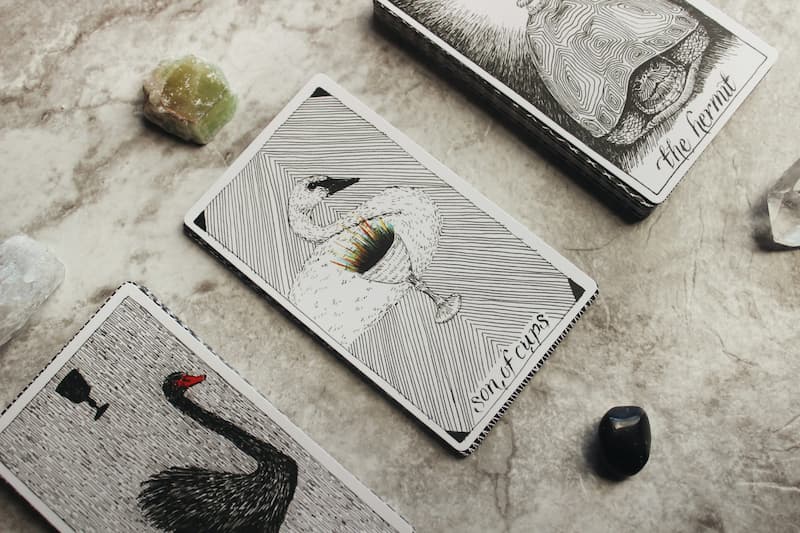
As someone familiar with the tarot, who has studied and collected many tarot decks and books through the years, I still get mind blanks when it comes to certain cards.
It’s normal to get stuck and have no idea what certain cards mean, so don’t worry or judge yourself negatively. Instead, adopt a curious attitude.
Keep the card somewhere visible in your house, like your kitchen table, your nightstand, or your work table. Revisiting the image every so often throughout the day can spark new insights.
If you’re stuck, consult what other people think about the card. One of my favorite “hobbies” is watching YouTube videos from different people offering their ideas and interpretations of certain cards. I also love having a few tarot books nearby.
Another approach to deciphering the card’s meaning is to do some pathworking with it. Imagine stepping into the card and talking or interacting with the figures inside the landscape. What do they have to say?
If you’re not skilled at visualization, you may like to create a drawing inspired by the card, listen to music that reminds you of the imagery, or ask your unconscious to share its wisdom and place the card next to your bed at night to see what dreams come up.
Get Tarot Shadow Work Help Every Week

Every week, I intuitively pull cards and send out an email to help our lovely group of Shadow & Light members dive deep into their shadows and reconnect with their Inner Light.
Shadow work done by yourself can be tricky and lonesome at times. That’s why we’ve decided to offer this ongoing space to support you every step of the way.
You receive direct, ongoing access and psychospiritual support from me and Mateo each week via our Q&A offering. If you’d like us both to guide you on your inner work path, this is the ideal place to do so.
You can join here! We’d both love to help you on your shadow work journey.
Be Gentle and Go Slowly
Tarot shadow work, when done consistently, can be truly alchemical in nature, transforming your pain into a source of power and your darkness into a form of light.
Please approach this work with gentleness and slowness, honoring your limits.
Tell me, have you done any tarot shadow work before? What spreads, books, or insights do you have to share? I’d love to hear below!
All photos © LonerWolf.
Decks featured in this article include: The Wild Unknown Archetypes Deck by Kim Krans, Anima Mundi Tarot, Smith-Waite Centennial Tarot, Wild Unknown Tarot by Kim Krans, Starlight Illuminated Tarot by Carol Herzer, Tarot of Mystical Moments by Catrin Welz-Stein.
If you need more help, we offer 2 powerful ways to guide you on your inner journey:
1. The Soul Work Compass Course: Break free from feeling lost and disconnected. The Soul Work Compass is a practical 12-step course that transforms soul loss into soul clarity. Discover your core values, heal core wounds, and create a personalized compass to guide every decision you make.
2. The Inner Work Journal Bundle: Heal at the root. This Inner Work Journal Bundle guides you through self-love, inner child healing, and shadow integration with 150+ prompts and activities. You get editable digital files to use on any device or print unlimited times. Not for lukewarm seekers, these journals are for those ready to transform.








Tarot is a great help if done with dedication and deliberation. I have profited immensly from Tarot and still do. Yet one thing to the proposed online Tarot: it works, but you do not get into deeper thinking about the cards you have drawn. At least I don’t. It’s very different from a layed-out deck and the cards still visible hours later when you probably want to think again about the outcome. As for online, with one click, all is gone and you either think, ‘oh hell what were the cards”, or you think, “ok, it wasn’t so important anyway”. Both is not very helpful and kind of superficial and of no value.
I agree, Sabine. Having a physical deck allows for much greater depth of reflection. Thanks for sharing this insightful perspective!
Thank you for your encouragement and information on a “safe” and “step forward” way to approach my sensitivity….I have been reluctant and somehow fearful (fasle evidence appearing real)….as I know a Very gifted person, I need to develop my own and am a late commer..there are cobwebs life to work thru…
Thank you!
It’s a pleasure to be of help to you, John :)
I had been with drawing from Tarot, a practice I had of doing a spread every new year Eve and birthday…but my focus was always on the future. It would be frightening to pull the Tower or hopeful to pull the Lovers. Today I started a new practice, I am focusing on my shadow self. I have a new deck of MotherPeace, the MotherPeace deck I had used for over 40 years has gone missing so I replaced it with a mini MotherPeace. I pulled a single card for the single question of what my shadow self wants to tell me about a lesson I know I am in the midst of as I sell my house. The card I pulled reversed was 3 of swords. For me it hold an unpleasant message of challenge, but reversed, I felt it was telling me to let go. Not to take the battle of negotiations too serious. When I drew a card to affirm my feeling about it, or to receive clarity if I was off the mark, I received World. Which affirmed for me all is well, and I simply need to let go of my fear and allow life to play out. Trust, seems to come from this card as well.
I plan to draw a card to the question of my shadow self each day. The raw fear I feel as the negotiations go forward, trying to sell an older home for the past 9 months, presently have a buyer and the sewer collapsed. It is what it is, and now it needs my attention to repair. There would appear to be at least 3 swords at work creating chaos, but maybe it is all a show. Maybe I let the buyer decided and move on if he decides against it, no drama at all. When I thought this solution, I pulled one more card and that is when I received the World.
Thank you, Again.
I love how you’re applying the tarot to more present-moment centered issues, Carol. There is always something off with future-focused readings — firstly they take away a sense of personal agency and power, and secondly there’s no way of truly knowing what the future holds as our decisions in the present are constantly shaping and reshaping it. Whatever happens with the sale of your house, the tarot seems to be mirroring back your own wisdom that whatever will be, will be. The only true control we have is over our inner response and mentality.
There are also websites where you can do tarot readings so you don’t need a physical card deck. I use one written in Danish so I won’t share it here.
Yes, this is a great suggestion, Thomas. I have the Trusted Tarot app on my phone, and I once used Labyrinthos – but I’m old school and I prefer the tactile feel of shuffling the cards in my hands, so I rarely use them now. Brilliant when you’re first getting started or are traveling/don’t have a deck with you, though!